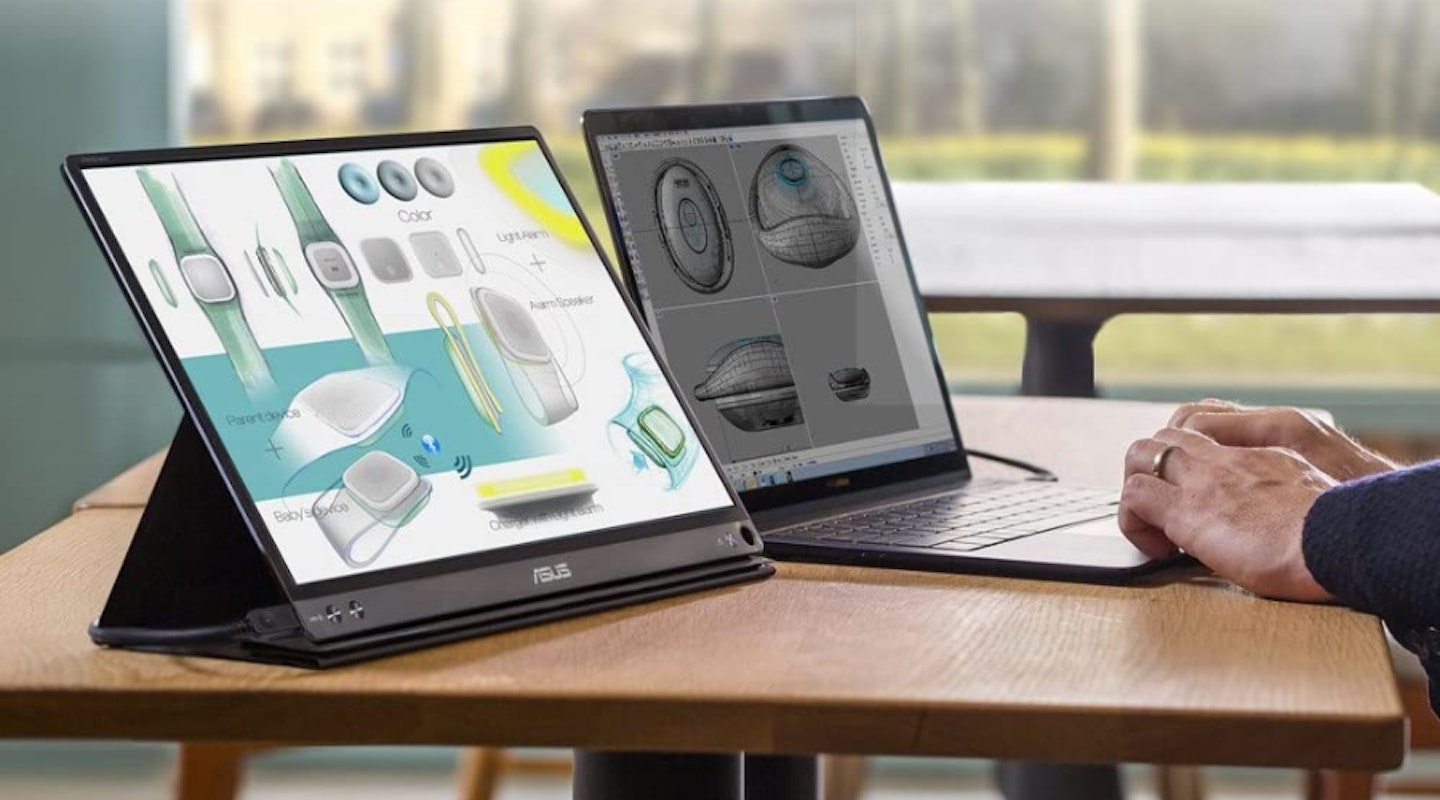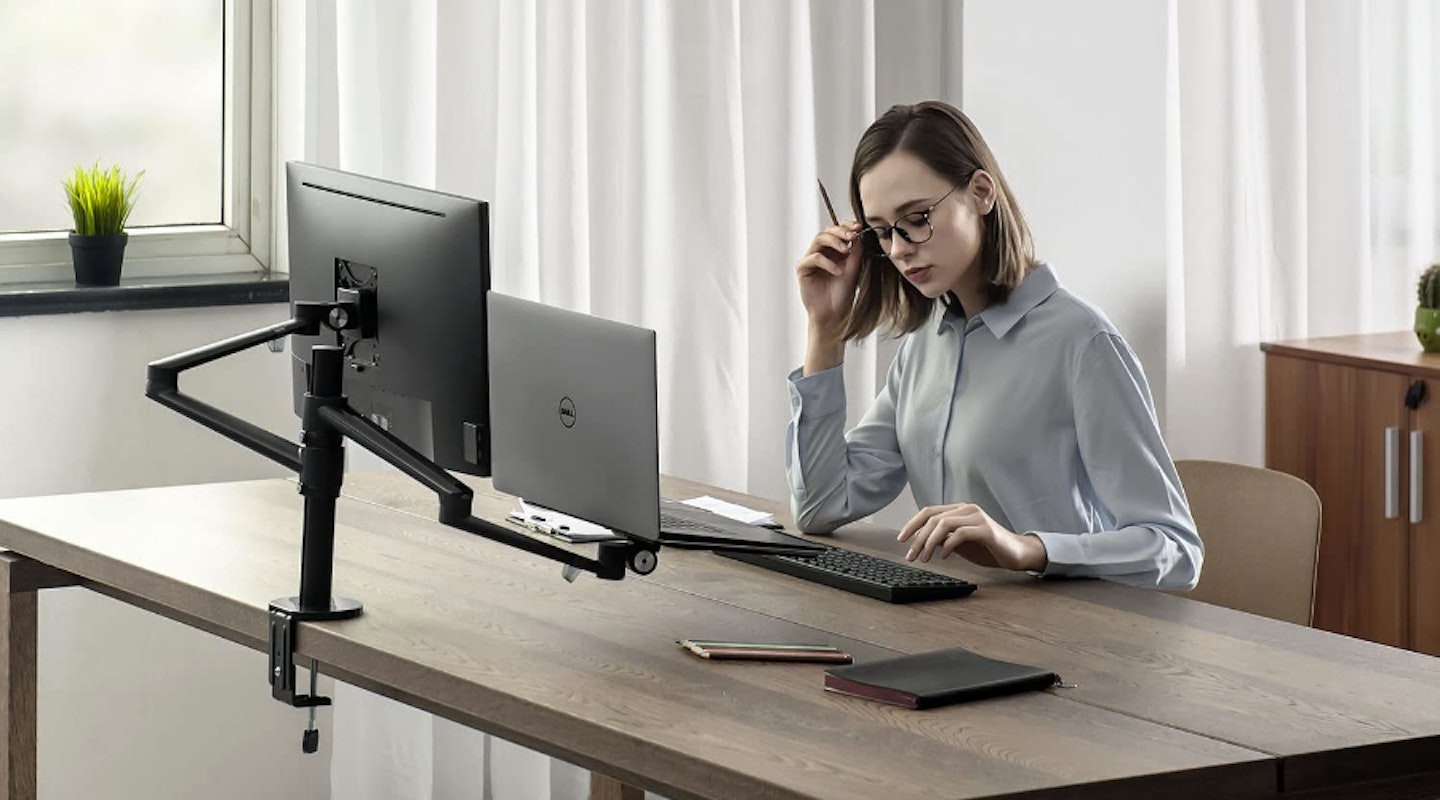We’ve all seen stock images like the one below. Someone in the home office, working away with a smile on their face, inexplicably pleased at the work being displayed in front of them on two monitors. Why is this such a common arrangement? Does anyone really use dual monitors, do they offer any benefit, or are they just there for show?

Well, it turns out that its more than a techie’s extravagance – a dual monitor set up is a sure way to up your productivity. Whether you use a laptop, Macbook, iMac, or desktop PC, upping to two screens is going to revolutionise how you work.
Measuring productivity is always a tricky and inexact science, however after surveying 1,000 workers from across the information, design, and engineering sectors, Jon Peddie Research concluded that some users can expect a 42% boost in productivity when employing a second screen.
How will it help?
Whether you’re an administrator, creative, writer, or exec, doubling your desktop size is going to declutter your on-screen workspace. The large amount of windows and programs that we need to keep open during working hours is, at times, excessive, with emails, calendars, Excel, Word, and an internet browser all vying for attention. And that’s before you even factor in the like of Slack, Microsoft Teams, and Skype, the near-ubiquitous workplace chat and video conference programs so essential to our current working from home situation.
Having two screens means that many of these programs can be opened and viewed simultaneously. Documents are no longer piled on top of one another, or relegated to the depths of the taskbar. Word documents can sit alongside each other for reference and comparison, and shared spreadsheets can be discussed and edited while video conferencing. Emails can remain open while you research online, and news articles can rest alongside team chats.
As an effect of this decluttered on-screen workspace, your focus can be maintained. This improved focus will translate into an increased workflow, thanks to the ease of desktop navigation, multi-tasking and multi-program tasks are streamlined.
RELATED: The best PC monitors
What if I don’t need dual screens all of the time, or need to move locations regularly?

If you feel that a dual monitors set up would help on occasion, or that you’re always travelling for work, then a portable monitor may be the answer. The ASUS ZenScreen MB16AC is a prime example of the portable monitor option, offering a 15.6-inch screen that can be oriented both vertically and horizontally. They’re roughly as thin a pencil, and are easily stored in a laptop bag or on a bookshelf.
What about desk space?
RELATED: Best monitor mounts
Ample work desk space is essential to maintaining a comfortable and efficient working environment. Understandably, you want to be cautious that by adding some more digital workspace to your PC, that you’re not losing it in the real world. Thankfully, there are a number of solutions at hand.

Mounting your screens is always a great option. Even if you’re not going to upgrade to a dual-screen setup, we’d still recommend picking one up for a single monitor. The best monitor mounts improve ergonomics, screen viewing angles, and liberate plenty of desk space. A similar space-saving option is to pick up a Samsung Space Monitor. This monitor is among the best we've seen, and thanks to the inbuilt mount, it can sit flush against a wall or be pulled forward to a floating viewing position.
If you’re working on a laptop, there’s a mounting option for you too. Firstly, you’ll need to make sure you’re using an external keyboard, mouse and laptop stand – again, if you’re working all day on a laptop, this is highly recommended regardless of your screen-based needs. This will allow the laptop to placed further away from you, free up immediate desk space. Many monitor mounts solve this issue for you, coming with in-built laptop stands.

If mounting isn’t an option, a desk raiser can also help. While this won’t strictly give you more space, the shelving underneath the monitor repurposes previously lost space into handy storage areas.
If you’d like to avoid mounts and raisers, there are plenty of monitors available with small and discreet stands. Or you could always opt for a new desk, of course.
